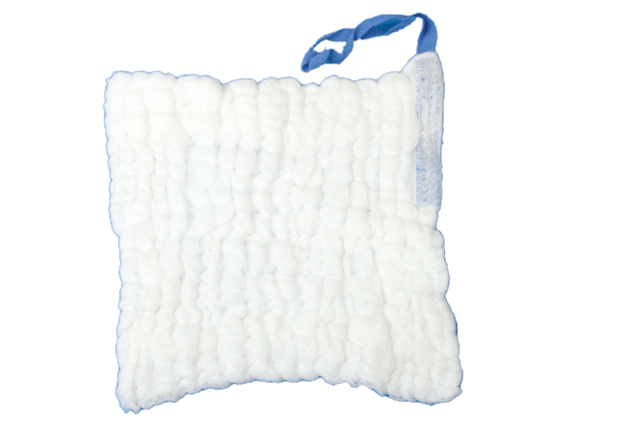
Laparotomy Sponges (Washed)
Many surgical procedures involve open incisions and deep cuts. This creates the potential for complications such as infection and leakage of bowel contents, making the need for a sterile dressing essential. One way to reduce these risks is with a laparotomy sponge, an absorbent pad that is placed inside the abdominal cavity during surgery to soak up blood or other fluids from around internal organs.
Sizes: 20 x 30 cm, 30x 30 cm, 45 x 45 cm etc.
A laparotomy sponge is a small, sterile, absorbent sponge that is inserted into the abdominal cavity during surgery. The laparotomy sponge is used to absorb any blood or fluid that may be present in the abdomen and to prevent infection. The laparotomy sponge is also used to protect the organs and tissues from trauma during surgery.
A laparotomy sponge is a simple, yet effective way to prevent serious post-surgery complications. By absorbing and retaining blood, the laparotomy sponge helps to keep the surgical area clean and free of infection. The laparotomy sponge is also useful in reducing swelling and bruising after surgery.
Laparotomy sponges are simple devices that are placed in the abdominal cavity during surgery to prevent fluids from entering and accumulating in the abdomen. They are very effective at preventing post-operative complications, such as ascites, which can lead to serious health problems. However, there are some drawbacks to using laparotomy sponges. First, they can be difficult to place correctly and may not always stay in place during surgery. Second, they can absorb blood and other fluids, which can make them heavy and difficult to remove after surgery. Finally, if they are not removed properly, laparotomy sponges can become a breeding ground for bacteria, which can cause infection.
A laparotomy sponge is a small, absorbent pad that is placed over the incision site during surgery. The sponge helps to absorb any blood or fluid that may leak from the incision and prevent it from pooling around the wound. This can help to reduce the risk of infection and other complications after surgery. Laparotomy sponges are typically used for abdominal or pelvic surgeries, but can be used for any type of surgery where there is potential for bleeding or leakage from the incision site. If you are scheduled for surgery, ask your doctor if a laparotomy sponge will be used.
It is important to use a Laparotomy Sponge during your operation or surgical procedure in order to prevent any post-operative complications. These complications can include infection, bleeding, and even death. Using a Laparotomy Sponge will help to ensure that your surgery goes as smoothly as possible and that you recover quickly and safely.
Laparotomy sponges are used during surgery to help prevent infection and other complications. They can be reused if they are properly washed. To wash a Laparotomy sponge, first remove any blood or other fluids from the sponge with sterile water. Next, soak the sponge in a solution of 1 part bleach to 10 parts water for at least 10 minutes. Rinse the sponge with sterile water and air dry it. The Laparotomy sponge can then be reused.